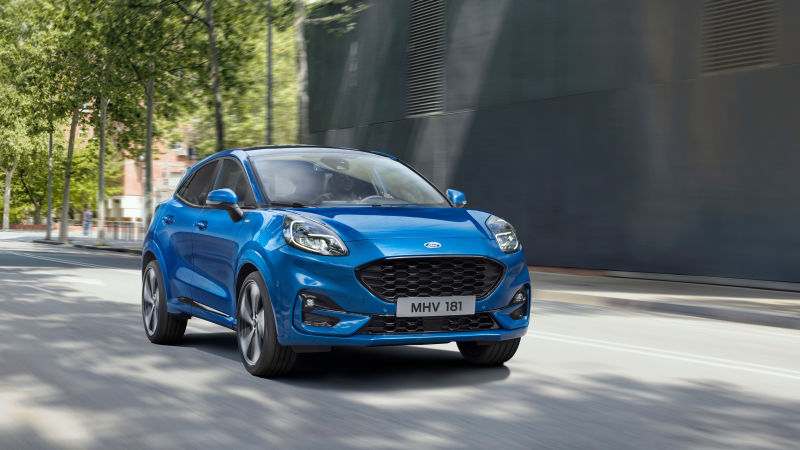
The Ford Puma, once part of that small, two-door car segment that was popular in decades past, is back, and it sure is big—bigger than it ever was, that is. Ford is reviving the old, driver-oriented nameplate as a new European crossover with exhilarating features like driver assistance, massaging seats and luggage space.
That’s right. Luggage space. Get excited.

But more importantly, it’s a crossover that gives European buyers a choice with some actual flare—and a crossover Ford should’ve brought the U.S. as well. It’s based on the Fiesta, and no matter the sadly nostalgic connotations that come with its name, the new Puma has its own, quirky styling rather than just looking like Ford pancaked one of its big SUVs into a shorter, stockier version of itself—styling done for the sake of offering more crossovers, instead of making those crossovers their own.
European buyers can now go for a midsize, high-riding Ford crossover that doesn’t look complacent, like some of the other products it lines up next to on the product page for Ford UK. It’s a grown-up Fiesta with space for the kids and the option for a stick, without that flat-faced look of the rest of the lineup.
Advertisement

In America, well, we’ve got the EcoSport.

Advertisement
Ford of Europe announced the details of the new Puma on Wednesday, calling it “seductive,” “athletic,” “aerodynamic” and complete with “best-in-class load space and luggage capacity.” Carmakers really do reuse and recycle fill-in-the-blank scripts for American truck ads for the rest of the world, it seems.
The new Puma, Ford said, joins a growing family of other Ford-badged SUVs and “SUV-inspired crossovers” in Europe,since more than one in five of the cars it sells there fall into those categories. It’ll do so with two engine variants—one rated at just over 123 horsepower and another rated at nearly 153 HP —and a mild hybrid system, along with safety features like parking assistance, blind-spot warnings, lane-keep assist, pedestrian detection, collision assistance, automatic braking, and automatic high beams.
Advertisement

Ford said in the announcement that both a six-speed manual and seven-speed dual-clutch transmission will be available on the Puma, with the dual-clutch coming after the launch along with a diesel powertrain.
Advertisement

The announcement mentioned two of the trims that will come on the Puma, and both are familiar: Ford’s Titanium ST-Line badges. Titanium-trim Pumas will get 18-inch alloy wheels, chrome accents, a “leather-effect” steering wheel, and wood-look interior features, while the sportier ST-Line will have the option for 19-inch wheels, a sport suspension, matte-black grille accents, alloy pedals, and the option for a roof spoiler.
Advertisement
The Puma’s touted luggage capacity includes space for two bags of golf clubs to stand upright in the back when the lid is off of its deep compartment for extra storage space, and the car also has other interior features like an eight-inch infotainment touchscreen with Apple CarPlay and Android Auto, a customizable digital instrument cluster, wireless charging and the option for removable seat covers that can be zipped on and off for washing.

Advertisement
And while the new Puma’s new looks are a matter of personal taste, so is the rest of it. When the car was on the market last in the late 1990s and early 2000s as a small two-door, Ford marketed it as “a driver’s dream” and even put it in an ad with Bullitt footage. But the once small, sporty Puma nameplate is back as a crossover—something we’re all used to happening by now—because bigger, bulkier vehicles with ride height and extra space are what sells these days.
Go big or go extinct, right? But if we’re going with that mindset, at least offer the cooler options everywhere.













